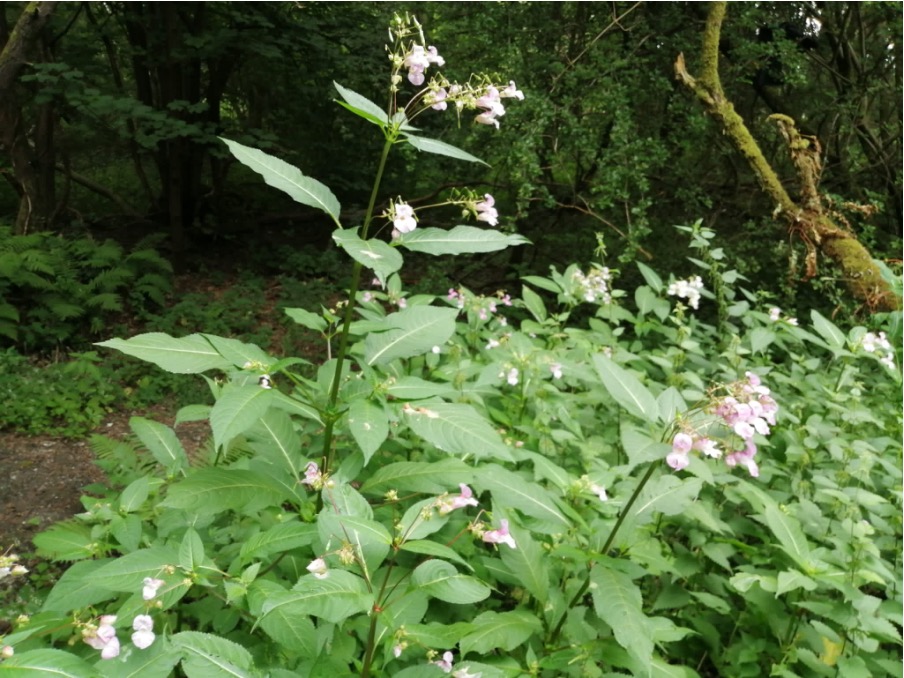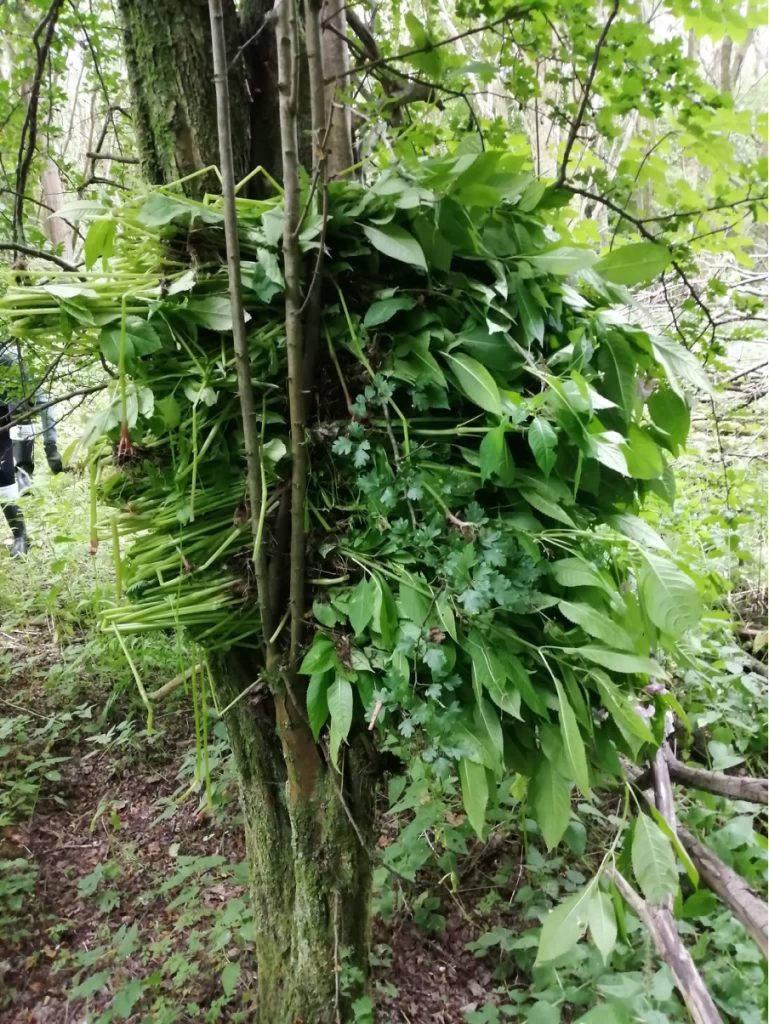

The Loch Lomond Fisheries Trust has been actively combating the threats posed by the invasive non-native species known as Himalayan balsam, which is widely present across the Loch Lomond catchment region.
Himalayan balsam is a considerably tall growing plant that can reach 6-10 feet in height, and during the months of June-October it produces bright pinkish flowers. These flowers then develop seed pods that open explosively when mature. Each Himalayan balsam plant can create up to 800 seeds which spread very widely as the plant can shoot its seeds up to 22ft away! These seeds can also still become viable balsam plants for up to 2 years.

Himalayan balsam is a serious problem, as it can quickly take over environments and become a serious weed problem. This is especially the case on riverbanks, as well as ponds, other aquatic habitats and in waste areas, and balsam can also rapidly invade gardens. Himalayan balsam grows and spreads extremely fast and outcompetes other plants for light as it grows. It dies back in the winter, which is problematic as it is frequently found on river banks, and when it dies back, it leaves large portions of the river bank bare and exposed. This therefore makes the riverbanks unstable and more likely to be damaged by erosion.

The Loch Lomond Fisheries Trust has been tackling this invasive species by hand pulling it out, mechanically removing it via strimming, and by organising volunteering events with local communities, such as in Balloch Country Park, Saltings Nature Reserve and in Havoc Park in Dumbarton. These volunteering events have had a great and enthusiastic response!